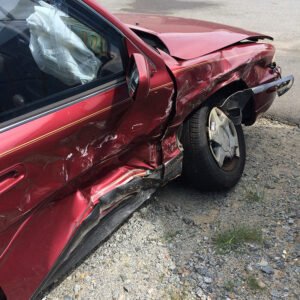March 21, 2019
Why Do Car Crashes Still Happen So Often?

While Georgia saw a steady decline in traffic accidents and related fatalities from 2006 on, a sharp increase occurred in 2015 and continued to rise. Similar patterns can be found in other southern states and all over the country. A number of safety innovations and road safety programs, like the Governor’s Office of Highway Safety’s evidence-based traffic safety enforcement plan, have contributed to saving thousands of lives over the years; however, impaired, distracted, and fatigued driving keeps the number of losses up.
It’s crucial for responsible drivers to actively drive and be aware of their surroundings at all times. Even the most minor distraction can change the course of a person’s life. Dealing with a crash when someone is seriously or fatally injured because of another driver’s decisions is incredibly difficult, especially when the accident should have been prevented.
With the number of technological advancements in the automotive industry, accidents rates should be going down. Unfortunately, it’s nearly impossible to control the actions of others. While a single driver may not be able to improve crash rates on their own, if the majority of drivers are aware of why crashes are happening so often, those individuals can look out for road hazards and take precautions to avoid an accident.
A Brief History of Car Safety Innovations
In theory, traveling by car is presently easier and safer than ever. While the first motor vehicles were heavy and difficult to control, today’s vehicles are intuitive, and some can even drive themselves. Even though the first vehicles were on the road in the late 19th century, the first safety innovations weren’t introduced until the early 20th century. Wiper blades, rear view mirrors, turn signals, headrests, hydraulic brakes, safety glass, and padded dashboards were all invented before the 1950s.
The 1950s saw huge improvements in vehicular safety. Airbags and three-point seat belts were introduced, and the crumple zone concept, which is used to absorb the force of impact in a wreck, was invented. In the 60s, car safety rules were developed, which mandated seat belts, head restraints, and collapsible steering columns in all produced vehicles.
As the 1970s and 80s rolled around, more legislation was passed, and electronics were being introduced. Airbags were an optional feature, the first electronic anti-lock braking system was produced, and the National Highway Traffic Safety Administration (NHTSA) began crash testing new vehicles and publishing the results.
The 1990s saw an increase in the installation of electronic systems. Side impact protection, electronic stability control, and brake assist systems were introduced. In the 2000s, computer technology continued to develop and protection measures for pedestrians were introduced. Lane departure warning systems, blind spot cameras and motion sensors, automatic braking in emergency situations, anti-skid systems, and pedestrian detection systems significantly improved vehicular safety across the country.
Currently, autonomous vehicles are the latest development in car safety innovations. While the computer technology is still in development, it’s predicted that accident rates could decline significantly with the introduction of self-driving cars.
A Look at Where and When Car Accidents Happen the Most
Part of understanding why so many car crashes occur involves taking a look at where and when accidents are most likely to happen. There are a number of factors that play into determining the most dangerous times and locations to drive. If drivers are aware of these potential hazards, they can be more vigilant behind the wheel.
While you may assume the majority of accidents occur on interstates or freeways because of the amount of traffic and fast traveling speeds, that is not the case. Most accidents occur in parking lots, at stop signs, on rural highways, and on two-lane roads. While parking lot accidents aren’t likely to result in devastating injuries, the close quarters, lack of regulations, and frequent pedestrian movement cause of a high number of fender benders. Stop signs are also a common spot for wrecks because distracted drivers may fail to stop, roll through the signs, or go at the wrong time.
Rural highways, even though they contain less traffic flow, are common spots for crashes. The lack of traffic can cause a driver’s awareness to drift. The roads are also less likely to be properly maintained in inclement weather. Two-lane roads are also a danger because of the chance of head-on collisions.
There are a number of specific times when automobile accidents are more likely to happen, including rush hour, during holidays, in winter weather, and during the summer. During rush hour, the most cars are on the road. Many drivers are either in a rush to get to work or get home, which can result in speeding and aggression. The holidays are dangerous because there’s likely to be more cars on the road and a higher chance for drunk drivers. Snow, sleet, and ice can quickly result in a series of accidents if roads are not taken care of and drivers are reckless. Accident rates also increase in the summertime because there are more young drivers on the road, as many schools are not in session.
If you find yourself driving in one of the locations discussed above during a more dangerous time, it’s crucial to keep your eyes and mind on the road, and your hands on the wheel.
The Root of the Problem: Human Error
While there are times that poorly maintained roads or defective auto parts cause accidents, the NHTSA reported that 94 percent of crashes are the result of driver error. These mistakes can be grouped into four categories:
- Recognition Errors. This happens most often when a person is distracted. Common distractions include cell phones, navigation systems, food, and passengers. When a driver isn’t completely focused on the road, their ability to recognize dangers decreases.
- Decision Errors. These mistakes are generally made by negligent drivers and are active decisions. If a person chooses to speed, drive too fast for the conditions, weave in and out of traffic recklessly, or tailgate other drivers, this increases their chances of getting into a wreck.
- Performance Errors. Younger, inexperienced drivers are at a higher risk for making performance mistakes behind the wheel. They may steer improperly, take corners at too sharp of an angle, or neglect to use their headlights in the rain.
- Non-Performance Errors. The most common non-performance mistakes occur when drivers fall asleep at the wheel.
The errors discussed above are entirely preventable; however, many drivers become complacent behind the wheel. Being too comfortable is dangerous, as drivers who are not aware of their surroundings are likely to wind up injured or injuring someone else.
While there is hope that future automotive safety innovations will decrease the number of lives needlessly lost every year, the key is for drivers to remain attentive and aware when traveling by car. When accidents do happen, our lawyers are here to help victims recover what they’ve lost. If you’re thinking about taking legal action after a crash, schedule a free consultation with us today.



